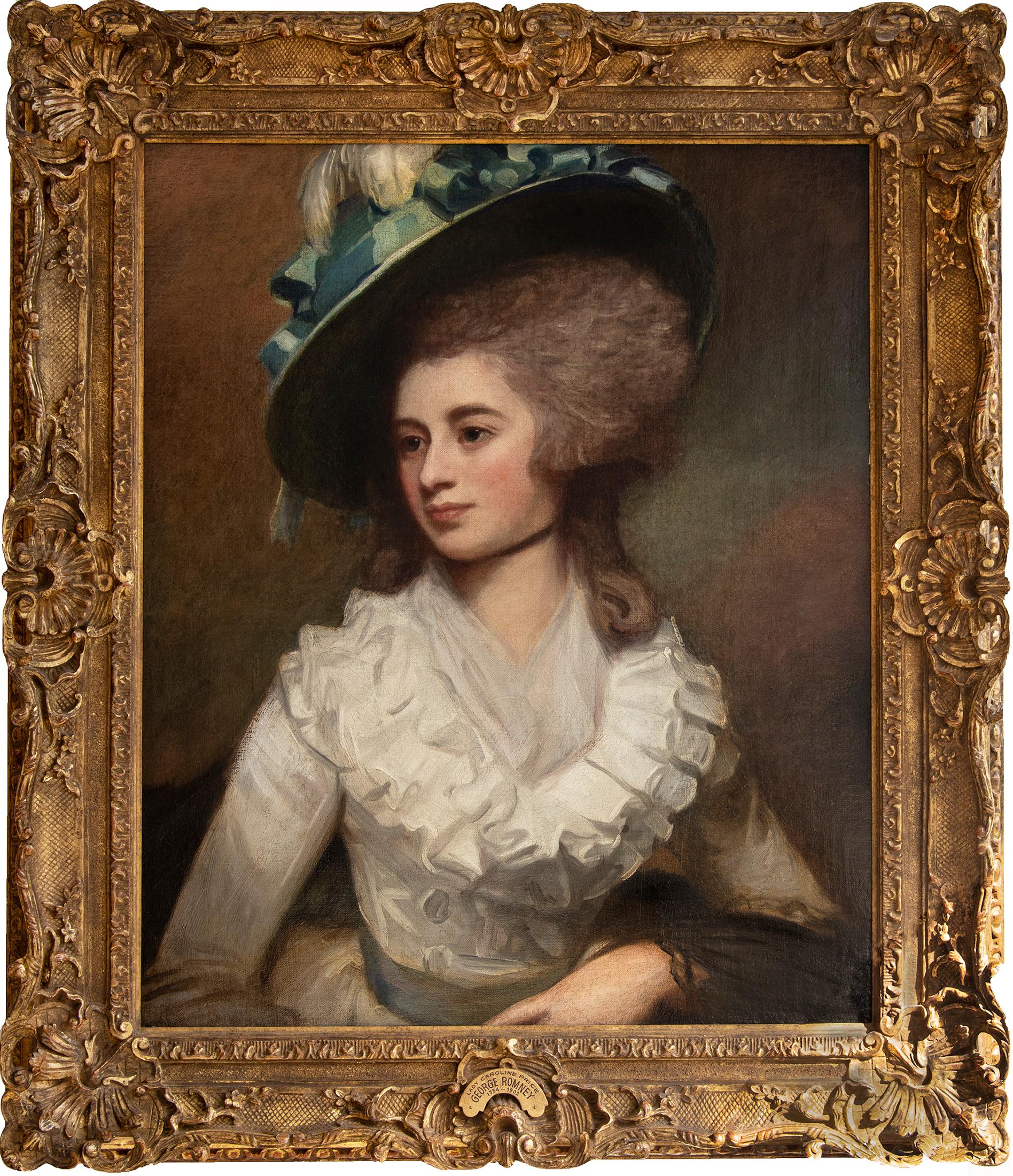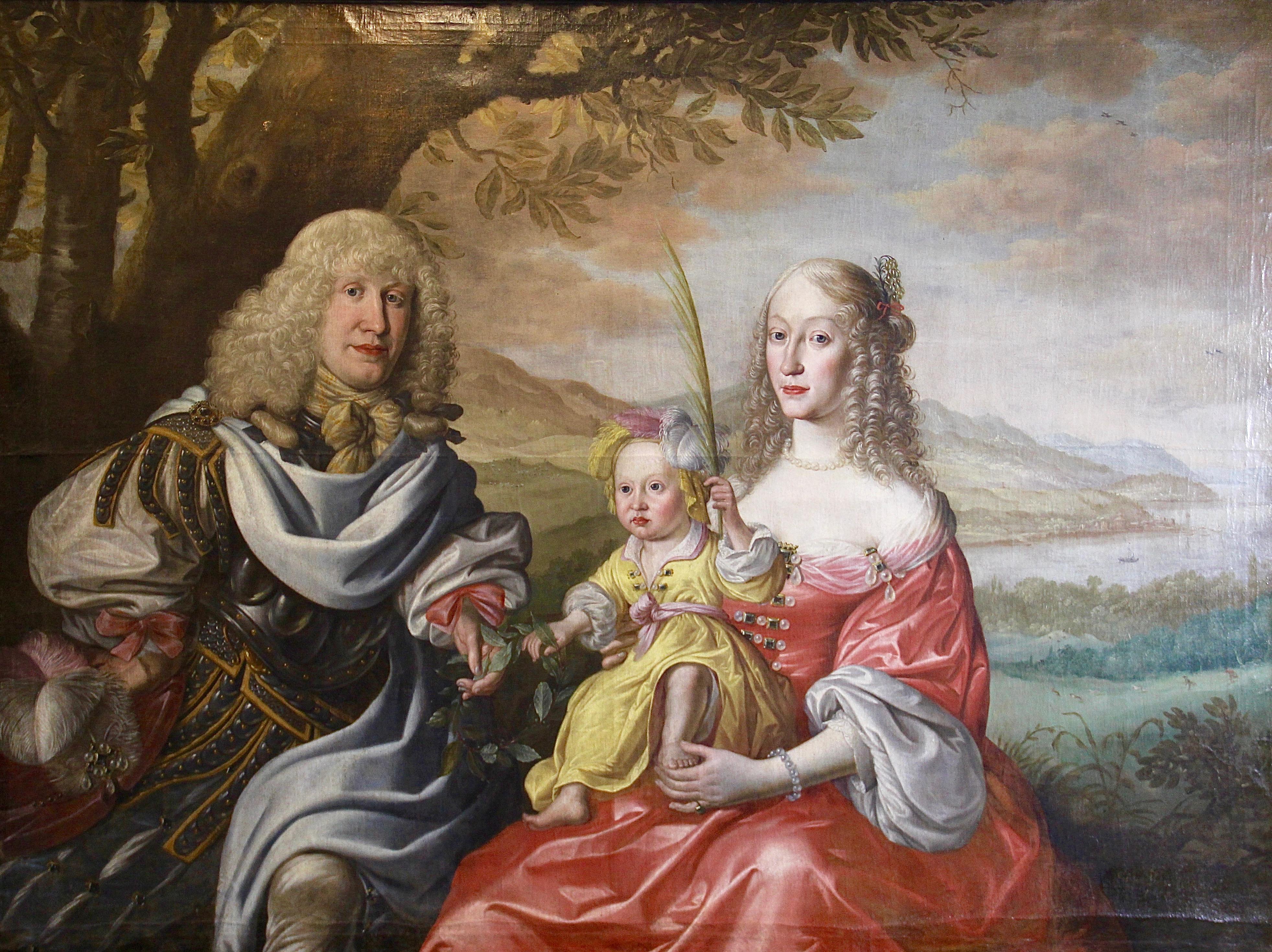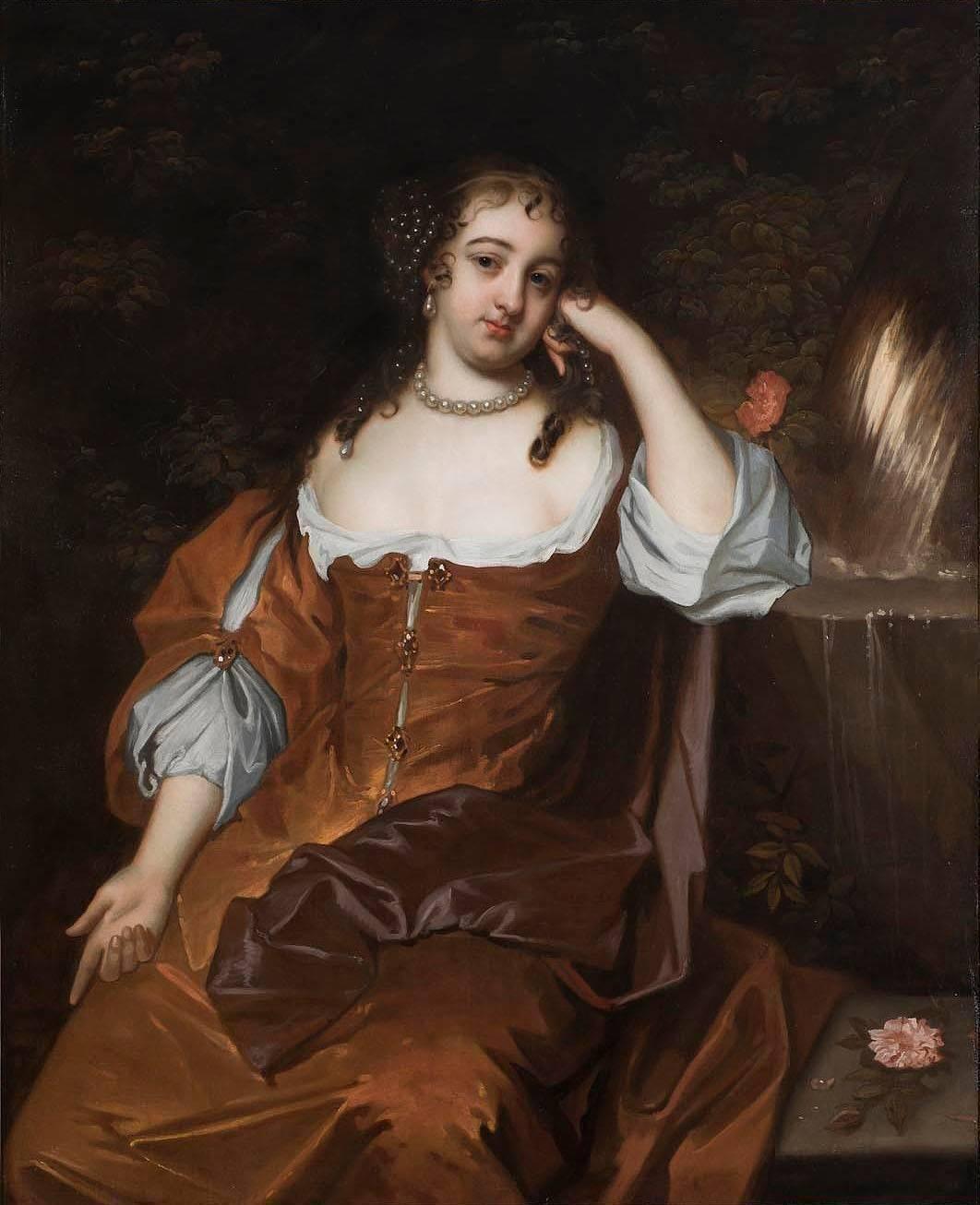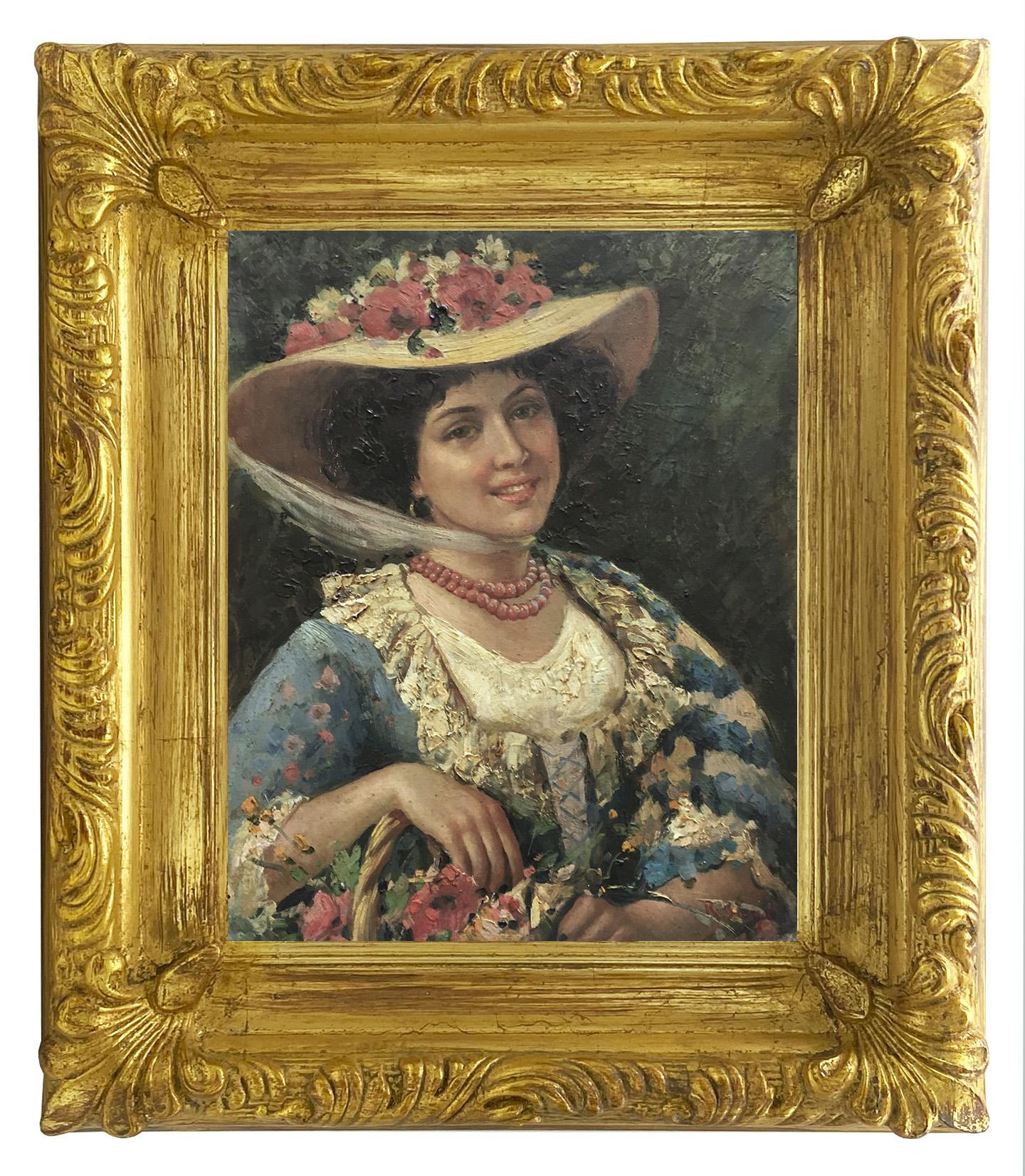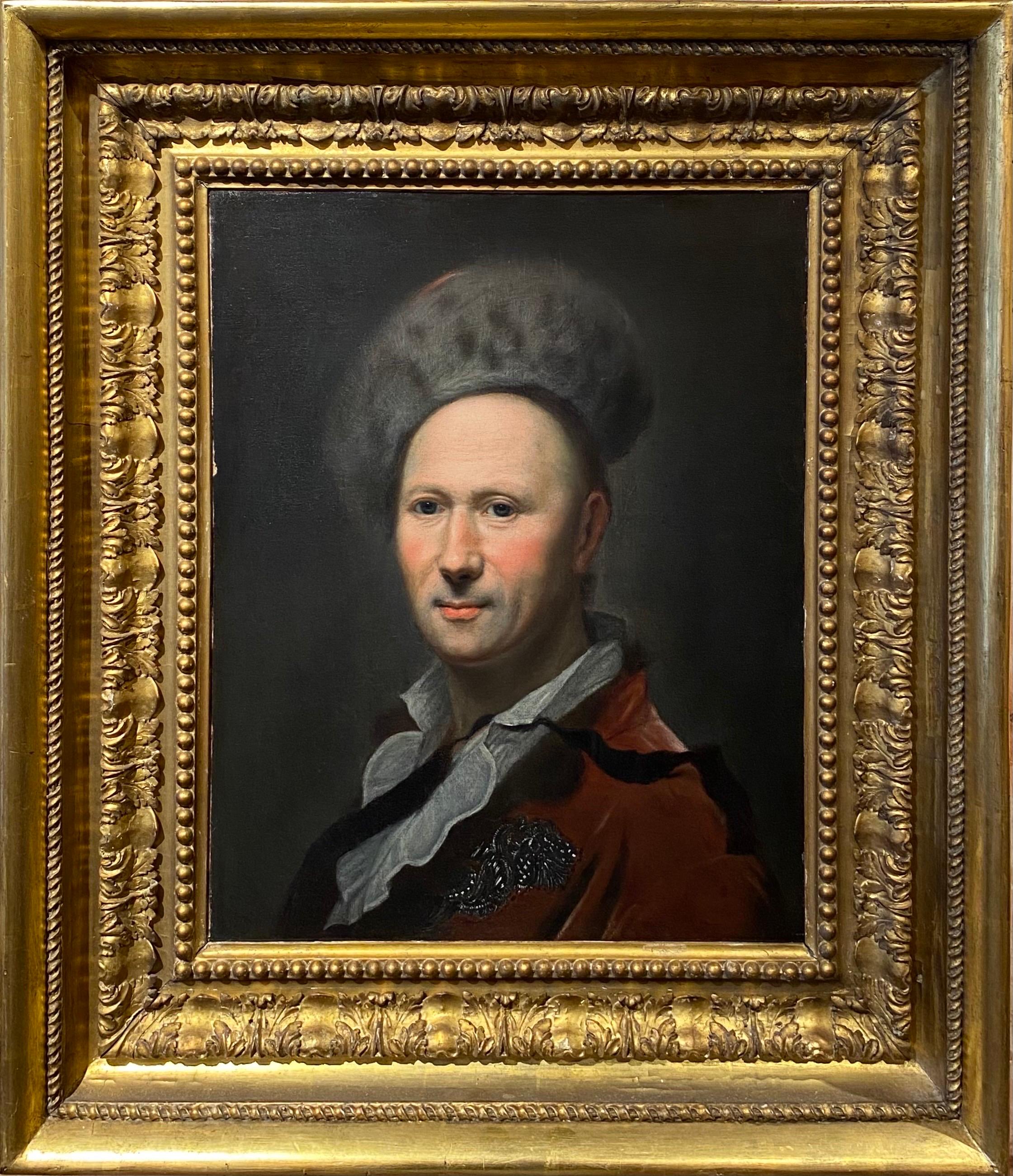Items Similar to Portrait of a María del Rosario Fernandéz, called 'La Tirana'
Want more images or videos?
Request additional images or videos from the seller
1 of 7
Portrait of a María del Rosario Fernandéz, called 'La Tirana'
About the Item
Circle of Francisco José de Goya y Lucientes
(Fuendetodos 1746-1828 Bordeaux)
Portrait of a María del Rosario Fernandéz, called 'La Tirana' (1755-1803).
OIl on canvas. 76.5 x 57.2 cm.
Provenance
Richard Frank Heathcoat-Amory (1903-1957).
Sotheby's, London, 27 June 1962, lot 86, as 'F. Goya'.
Anonymous sale; Sotheby Parke Bernet, London, 8 July 1981, lot 150, as 'F. Goya'.
Giancarlo Baroni; (†) Sotheby's, New York, 1 February 2013, lot 186.
Exhibited
New York, Knoedler Gallery, Goya, 1934.
After the painting in the Museo de la Real Academia de San Fernando, Madrid. María del Rosario Fernández (Seville 1755 - 1803 Madrid), was a prominent Spanish actress. Her husband Francisco Castellanos was also an actor and was known as 'El Tirano' (The Tyrant) due to the roles he frequently played when they performed together. Rosario Fernández's nickname, 'La Tirana', was the female equivalent of this nickname.
Goya painted two portraits of Maria del Rosario Fernandez: a three-quarter length painting in 1794, the year in which she retired from the stage; and a full-length portrait in 1799, now in the Museo de la Real Academia de San Fernando, Madrid.
The sitter was one of the most prominent actresses of her day in the Spanish theatre. She was married to Francisco Castellanos, also an actor, known as 'El Tirano'. 'El Tirano' and 'La Tirana' used to often act together.
‘When the present painting was offered for sale in 1962 it was accompanied by a letter from A.L. Mayer in which he suggested that the portrait was an autograph work by Goya and a reduced version of the artist's painting in San Fernando. Mayer also proposed that the painting may have been made for Don Diego Colón, a descendant of Christopher Columbus and a friend of the actress. There is no basis for this assumption but he probably suggested it because she is thought to have bequeathed to Colón another portrait of herself by Goya.’
Former owner Richard Frank Heathcoat-Amory (1903-1957) was a Lieutenant in the 4th Hussars, a senior partner at the stockbroking firm Stirling Amory, and Secretary in the British Embassy in Washington between 1939 and 1942. He was grandson to Sir John Amory, later Heathcoat-Amory, 1st Bart, created in 1874.
In this first of two Goya portraits of the actress, the artist had an illness which would eventually destroy his sense of hearing, but he still retained all the brilliance of his many years of experimentation in painting, showing la tirana in a majestic pose. Like Gangloff and Klumpke, Goya portrays a contemporary woman in a way that does justice to her legacy.
La Tirana received her name as a complement to the name of her husband, Francisco Castellanos. They say that Castellanos earned the tyrannical nickname El Tirano for his dramatic roles, but that sounds like a particularly rosy historical gloss to me. They married when La Tirana was fourteen, in Seville, then moved to Madrid to work in the four royal palaces, becoming enormously successful between 1780 and 1793. Unfortunately, she and her management did not pay enough attention to her health, and she vomited blood at her last performance, in the last decade of her life. The following year, after his own illness, Goya painted her again, and this second portrait is in a private collection. The second portrait is quite a contrast to the first la tirana.
Apparently, nobody ever knew exactly why Goya went deaf, but it could have resulted from an illness due to his decision to fix a broken wagon axle for his muse and paramour, the Duchess of Alba, in the middle of winter while he accompanied her into exile. He learned how to read lips and learned sign language, and continued his prolific work, which became much more focused on the painful and unpleasant aspects of life.
José María Martín Valverde claims that the 18th century in Spanish society was the first in which women were able to gain some degree of political independence from men, before Romanticism reinvigorated the story of the woman as the passive subject of veneration and/or vilification. Valverde emphasizes that La Tirana became very financially wealthy, independent, and influential, but that her success would cause her personal problems and problems with art institutions, due to the extreme subjugation of women in society. In her case, according to Valverde, it was mo' money, mo' problems, but not due to any fault of her own – it was only because her chorus of mostly-male haters couldn't stand to see a strong woman countin' stacks.
- Dimensions:Height: 30.12 in (76.5 cm)Width: 22.52 in (57.2 cm)
- Medium:
- Movement & Style:
- Circle Of:Francisco José de Goya y Lucientes (1746 - 1828, Spanish)
- Period:
- Condition:
- Gallery Location:Tallinn, EE
- Reference Number:1stDibs: LU2243213497202
About the Seller
No Reviews Yet
Vetted Seller
These experienced sellers undergo a comprehensive evaluation by our team of in-house experts.
Established in 2018
1stDibs seller since 2022
Typical response time: 1 to 2 days
- ShippingRetrieving quote...Ships From: Tallinn, Estonia
- Return PolicyA return for this item may be initiated within 2 days of delivery.
More From This SellerView All
- Wooded Landscape with Peasants in a WagonBy Thomas GainsboroughLocated in Tallinn, EEThomas Gainsborough R.A. (1727, Sudbury - 1788, London) Wooded Landscape with Peasants in a Wagon oil on panel 35,5 by 29,8 cm. Provenance Charles, Viscount Eversley (1794-1888); B...Category
18th Century Landscape Paintings
MaterialsCanvas, Oil
- Summer Landscape in the Meuse ValleyBy Andreas SchelfhoutLocated in Tallinn, EEAndreas Schelfhout (1787 The Hague - 1870 The Hague]0 Summer Landscape in the Meuse Valley Oil on panel. 69 x 92.5 cm. Signed lower right: A. Schelfhout f. Provenance Gemäldegalerie...Category
1850s Realist Landscape Paintings
MaterialsCanvas, Oil
- A winter landscape with huntersLocated in Tallinn, EEHendrikus van de Sande Bakhuyzen (The Hague 1795-1860) A winter landscape with hunters on a path along a stream Signed and dated 'H vd S. Bak...Category
1820s Dutch School Figurative Paintings
MaterialsCanvas, Oil
- A tavern interior with a dog and kitchen utensilsBy David Teniers the YoungerLocated in Tallinn, EEA tavern interior with a dog and kitchen utensils in the foreground. Signed lower left: TENIERS F. Oil on panel. 28 x 36,2 cm. Attribution RKD, the Hague Provenance Private collectio...Category
17th Century Dutch School Still-life Paintings
MaterialsCanvas, Oil
- OuranophobiaBy Ged QuinnLocated in Tallinn, EEGed Quinn b. 1963 Ouranophobia Executed in 2012. Signed Ged Quinn twice and dated 2012 twice (on the stretcher) Oil on canvas. 244 by 200cm. Ged Quinn was born in 1963 in Liverpool,...Category
2010s Figurative Paintings
MaterialsCanvas, Oil
- Nude modelLocated in Tallinn, EESigned 1934. Oil on canvas. 92 x 142 cm. The artist was born in the family of a locksmith, engaged in the manufacture of relief seals. In 1887 he was enrolled as a student at the Central School of Technical Drawing of Baron A. Stieglitz. L. Stieglitz. He studied lithography and etching with V.V. Mathe. During his studies he received a number of awards, annually participated in pupil exhibitions, and published his works in the "Pictorial Review" and "World Literature" magazines. In 1892 he left the course of his studies. He went to Siberia, where he worked as an engraver in the publishing house of P.I. Makushin. From 1895 he was an engraver of the Expedition of Preparation of State Securities in St. Petersburg. In 1902 and 1906, he went abroad to improve his skills using the funds of the Imperial Academy of Arts. In 1905 on the petition of Mathe was awarded the title of academician. He worked mainly in the technique of color etching. He created a number of engraved portraits of people of Russian culture (Alexander Pushkin from the original by O.A. Kiprensky and V. A. Tropinin, 1890s; A.G. Rubinstein from the original by I. Repin. Repin, 1895; Leo Tolstoy, 1890s; Konstantin Soldatenkov, 1902; Henryk Siemiradzki, 1904; Ivan Turgenev, 1905; Mikhail A. Zichi, 1910), representatives of the nobility and members of the imperial family. He made engraved copies of paintings of the Hermitage, the Russian Museum of Emperor Alexander III, and ex-libris. Exhibited his works at Spring exhibitions in the halls of the Imperial Academy of Arts, and exhibitions of the Association of Artists. Member of the society "Mussar Mondays. In 1904 he became one of the founders of the Russian Art and Industry Society. In 1917 he painted a portrait of A.F. Kerensky, and in 1918 - a portrait of V.I. Lenin. Participated in the festive decoration of the streets of Petrograd for the first anniversary of October (the embankment of the Ekaterina Canal). Exhibited his works at the First State Free Art Exhibition in Petrograd (1919), the First Russian Art Exhibition in the Van Diemen's Gallery in Berlin (1922), and the "Russian Book...Category
1930s Nude Paintings
MaterialsCanvas, Oil
You May Also Like
- 17th Century by Giuseppe Assereto Portrait of an Elderly Woman Oil on CanvasBy Giuseppe AsseretoLocated in Milano, LombardiaGiuseppe Assereto (Genova - 1626 ca – Genova 1656/57) Portrait of an elderly woman, possible portrait of Maddalena Massone, wife of Gioacchino Assereto Oil on canvas, cm. 65,5 x 51,5...Category
Early 17th Century Old Masters Portrait Paintings
MaterialsCanvas, Oil
- Portrait of Lady Caroline PriceBy George RomneyLocated in Miami, FLDESCRIPTION: Perhaps the best Romney in private hands. If Vogue Magazine existed in the late 18th century, this image of Lady Caroline Price would be ...Category
1970s Old Masters Portrait Paintings
MaterialsCanvas, Oil
- SIMON PETER TILEMANN, Family Portrait, 1658, Old Master. Baroque Rococo PaintingBy Simon Peter TilemannLocated in Berlin, DEExtremely decorative and large oil painting from the 17th century. Restored in places. Signed and dated Simon Peter Tileman 1658 fecit 'lower right Dimensions without frame. From Wikipedia, the free encyclopedia: Simon Peter Tilemann (1601, Lemgo – 1668, Vienna), was a German Baroque painter who was active Bremen, Kassel and Italy. According to Houbraken he first learned to paint flowers and he had a daughter who could paint flowers in watercolors. He was a good landscape painter who spent many years in Italy, but later switched to portrait painting and who painted the portrait of Ferdinand...Category
1650s Old Masters Portrait Paintings
MaterialsCanvas, Oil
- Portrait of a Lady, 17th Century Flemish Oil Old MastersBy Jacob HuysmansLocated in London, GBJacob Huysmans Flemish 1633 - 1696 Portrait of a Lady Oil on canvas Image size: 49 x 40 ¼ inches Gilt frame Huysmans was born in Antwerp and came to England during the reign of Charles II where he became one of the fashionable painters of the court.. The diarist Samual Pepys noted the artist as capable of a more exact likeness than Lely. Certainly the diarist records that by August 1664 in the circle of Queen Catherine...Category
17th Century Old Masters Portrait Paintings
MaterialsCanvas, Oil, Acrylic
- SPRING PORTRAIT- French School Impressionist - Italian Oil on Canvas PaintingBy Jean Philipe MorenoLocated in Napoli, ITSPRING PORTRAIT - Oil on canvas cm.30x24 by Jean Philipe Moreno, Italy 2002. Frame available on request from our workshop. Moreno’s portrait depicts a young Parisian woman, her face ...Category
2010s Old Masters Portrait Paintings
MaterialsCanvas, Oil
- Portrait of Conrad Friedrich Hurlebusch, Early 18th Century Oil PaintingBy Dominicus van der SmissenLocated in London, GBDominicus van der Smissen Early 18th Century Portrait of Conrad Friedrich Hurlebusch Oil on canvas Image size: 20½ x 16¼ inches Period gilt frame This is a portrait of Conrad Friedrich Hurlebusch, composer, Kapellmeister and organist, whom Van der Smissen most probably portrayed during his stay in Hamburg, Brunswick or Amsterdam. The identification is based on the reproduction of the portrait which was engraved by Pieter Anthony Wakkerdak (1740- 1774). Van der Smissen has reduced the face of the sitters to an egg-shaped oval in three-quarter view, applying diminution to one half of the figure’s torso, which is farther away from the viewer. This partial side view, with the head turned to look at the viewer over the shoulder, creates spatial depth and brings the figure to life by avoiding the stiffness of a frontal depiction. Because the artist chose to highlight the figure from above, a distinct shadow is cast under the tip of the nose, in the shape of a triangle. This is an often recurring and almost ‘signature’-like feature in Van der Smissen’s oeuvre. Hurlebusch's garments are of a very high quality and serve to reflect the sitter’s wealth, status and elegance. During this period, gentlemen often shaved their heads in order to facilitate the wearing of a wig, which wouldbe worn with a suit. Here Hurlebusch has been depicted in a luxurious turban-like cap lined with lynx fur, a highly fashionable and expensive material at the time. Over his shirt, he wears a velvet fur-lined gown adorned with decorative clasps fashioned from silver braid. The elegant informality of his appearance can be seen in his unbuttoned shirt and the unfastened black ribbon hanging from his button hole, which has been artfully arranged into a fluttering drape by the portraitist. The Sitter Hurlebusch was born in Brunswick, Germany. He received the first instructions in his field from his father Heinrich Lorenz Hurlebusch, who was also a musician. As an organ virtuoso, he toured Europe, visiting Vienna, Munich and Italy. From 1723 to 1725 he was Kapellmeister in Stockholm; later he became Kapellmeister in Bayreuth and Brunswick, and lived in Hamburg from 1727 to 1742, where he had contact with fellow composers Johann Mattheson and Georg Philipp Telemann. He made his living composing, performing and teaching. In 1735 and 1736, he is believed to have visited Johann Sebastian Bach in Leipzig, who promoted Hurlebusch’s compositions as the local seller...Category
Early 18th Century Old Masters Portrait Paintings
MaterialsCanvas, Oil
Recently Viewed
View AllMore Ways To Browse
Portrait Of Actor
Portrait Of An Actor
Full Of Money
Portraits Actress
Richard Frank
Portrait 1903
Old Money
Spain Old Master Paintings
Spanish Old Master Paintings
De La Muse
After Goya
Signed Goya
Oil Portrait Spanish Woman
4th Of July
18th Century Portrait Of Woman
Antique Actresses
Antique Canvas San Francisco
18th Century Oil Painting Woman

